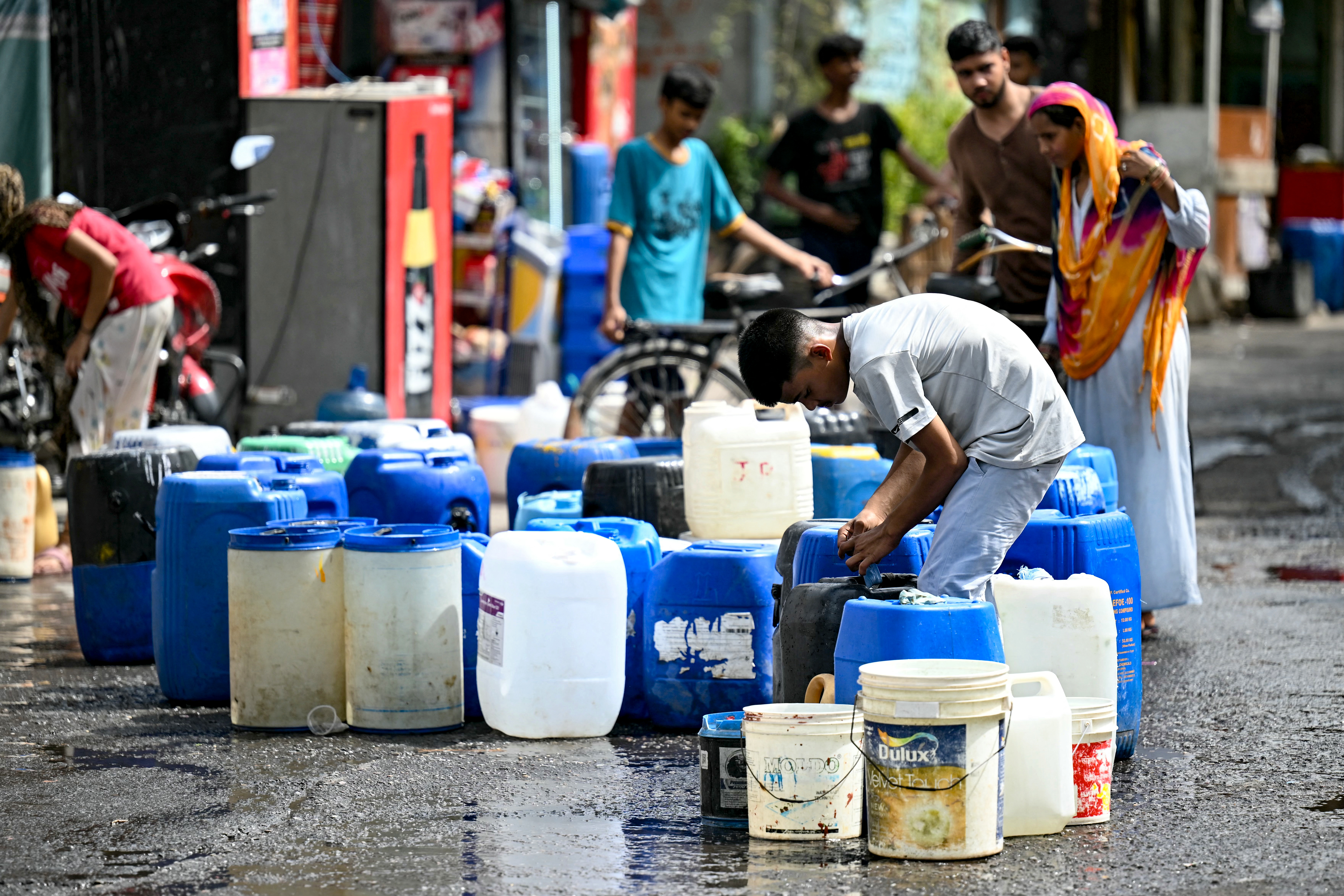
The rising frequency of extreme weather events including intense heat waves across the world calls for urgent measures to adapt to and mitigate climate change.
Since June 7, the China Meteorological Administration has issued consecutive days of high-temperature warnings. Over the past ten days, more than half of the land area in the central and eastern parts of the country has experienced temperatures exceeding 35 C, especially in the North China Plain and the Huai River Basin, where scorching heat waves have persisted, reaching close to or even exceeding 40 C.
READ MORE: Millions sweltering under extreme heat worldwide as summer arrives
Amid the scorching heat came more bad news: reports from the Copernicus Climate Change Service founded by the European Commission and the National Oceanic and Atmospheric Administration of the United States said the world had just experienced the hottest May on record.
The highest temperatures in Pakistan, northern India, Mexico, Guatemala, Iraq and many countries in Africa reached 45-47 C, exceeding 50 C in some places. In Brazil, eastern South Africa, southeastern Australia, northern Argentina, eastern US, and southwestern Canada, temperatures were close to or exceeded record highs.
High temperatures have not only had a significant impact on people's lives and health but also created problems for agriculture, water sources and urban infrastructure.
The World Meteorological Organization has said the surge in global temperatures in the first few months of 2024 was related to the El Niño effect, but judging by the inter-annual variability of extreme heat, not only the frequency of extreme heat but also its duration has increased.
There are many reasons behind the frequent occurrence of extreme heat. The first is global warming. The massive burning of fossil fuels since the Industrial Revolution has led to a dramatic rise in carbon dioxide and other greenhouse gas (GHG) emissions. The GHGs, accumulated in the atmosphere, have intensified the greenhouse effect and raised Earth's surface temperature.
Second, the fast pace of urbanization, increasing population density, intensive infrastructure construction and rising traffic congestions in many parts of the world have exacerbated the urban heat island effect, making urban areas much warmer than even surrounding rural areas.
Third, changes in land use, including deforestation and transforming of grasslands and wetlands into agricultural land and urban areas, have resulted in the destruction of natural ecosystems, reducing surface vegetation cover and affecting the region's natural climate regulation capability.
And fourth, the changes in the climatic cycle have increased the frequency of extreme weather events, including extreme heat. And natural climatic cycles such as El Niño and La Niña, which cause short-term temperature fluctuations, combined with global warming, have further exacerbated the frequency and intensity of extreme weather events.
Climate change is the result of increasing accumulated GHG emissions for more than 150 years, while heat waves are a warning to humankind to take immediate measures to address global warming. So, apart from reducing GHG emissions, we also need to adapt to climate change. To begin with, we need to more strictly monitor extreme weather events and improve the early warning system so that timely warnings can be issued and government departments can swing into action on time to save lives and property, and people can prepare for imminent extreme weather events.
There is also a need to strengthen the emergency response capability, chalk out plans to deal with extreme weather events including extreme heat, boost the reserve of emergency materials, carry out regular emergency drills and strengthen the emergency response capability to ensure rapid and effective response in the event of emergencies.
Besides, industrial sectors should vigorously develop renewable energy such as wind and solar energy to reduce their dependence on fossil fuels, and cut GHG emissions. In fact, China has made significant progress in solar power generation, becoming the world's largest producer and user of solar energy. It has also been promoting green building technologies by using energy-efficient materials and designs, and curtailing the use of air conditioning, thereby reducing energy consumption and GHG emissions.
While expanding urban green space and building more parks and green belts in urban areas can reduce urban temperatures and alleviate the heat island effect, developing smart agricultural technologies, more efficiently using water and strengthening water management can save water.
ALSO READ: A searing climate reality in 2024 calls for urgent action
Moreover, public awareness about environmental protection and ecological conservation, too, should be enhanced. Educating students from a young age about the adverse effects of climate change and how to mitigate and adapt to it, in the long run, is a better way of creating mass awareness about global warming. And scientific research on climate change, especially on extreme weather events including extreme heat, can provide us with a scientific basis for formulating effective response measures.
As a developing country with a diverse climate and a large population, China faces even more severe challenges. Therefore, it needs to take effective measures to strengthen monitoring, improve its early warning systems, bolster its emergency management capability, and pursue low-carbon development.
Given that climate change is a common global challenge, the world is in this together. And China, on its part, should strengthen international cooperation, and work with countries around the world to tackle climate change.
The author is deputy director of the Climate Change Strategy Research Division and chief researcher of National Climate Centre.
The views don’t necessarily reflect those of China Daily.


